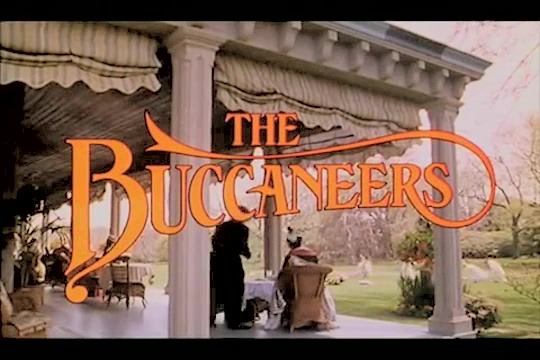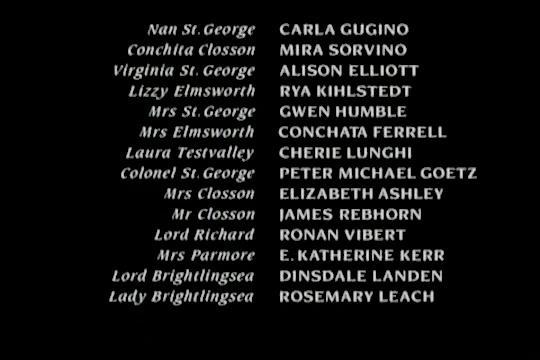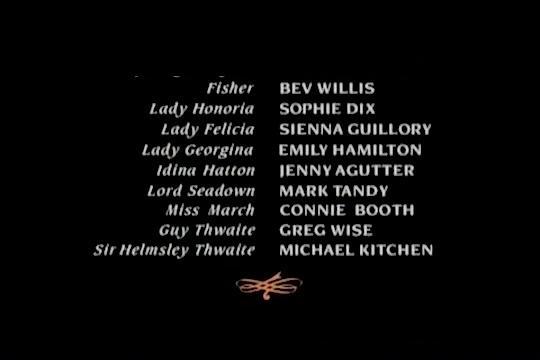#mr closson
Explore tagged Tumblr posts
Text





The Buccaneers (2023)
#my edits#my gifs#the buccaneers#nan st george#jinny st george#mabel elmsworth#lizzy elmsworth#mrs st george#mr closson#kristine froseth#alisha boe#imogen waterhouse#aubri ibrag#josie totah#christina hendricks#perioddramagif#periodedit#perioddramaedit#perioddramasource#period fc#onlyperioddramas#viscardi gifs#viscardi edits
82 notes
·
View notes
Text












historical costumes + purple
#bridgerton#kate sharma#queen charlotte#queen guinevere#queen victoria#the marvelous mrs. maisel#midge maisel#the gilded age#peggy scott#the buccaneers#conchita closson#nan st. george#mr. malcolm's list#phryne fisher#lidia poet#miss fisher's murder mysteries#perioddramaedit#historical costumes#period dramas are the best#my edits
471 notes
·
View notes
Text
youtube
The Buccaneers — Official Trailer | Apple TV+
A group of fun-loving young American girls explode into the tightly corseted London season of the 1870s, kicking off an Anglo-American culture clash as the land of the stiff upper lip is infiltrated by a refreshing disregard for centuries of tradition. Sent to secure husbands and titles, the buccaneers’ hearts are set on much more than that, and saying “I do” is just the beginning...
“The Buccaneers” stars Kristine Frøseth, as Nan St. George, Alisha Boe as Conchita Closson, Critics Choice Award nominee Josie Totah as Mabel Elmsworth, Aubri Ibrag as Lizzy Elmsworth, Imogen Waterhouse as Jinny St. George and Mia Threapleton as Honoria Marable. SAG Award winner Christina Hendricks stars in the series as Mrs. St. George, alongside an ensemble cast that also includes Josh Dylan as Lord Richard Marable, Guy Remmers as Theo, Duke of Tintagel, Matthew Broome as Guy Thwarte and Barney Fishwick as Lord James Seadown.
The Buccaneers premieres November 8.
#The Buccaneers#Alisha Boe#Conchita Closson#Matthew Broome#Kristine Frøseth#Josie Totah#Aubri Ibrag#Aubri Ibrag as Lizzy Elmsworth#Imogen Waterhouse#Mia Threapleton#Christina Hendricks#Josh Dylan#Guy Remmers#Barney Fishwick#period series#series trailer#Youtube
35 notes
·
View notes
Text
"THE BUCCANEERS" (1995) Review

"THE BUCCANEERS" (1995) Review
Years ago, I had anticipating watching for the first time, "THE BUCCANEERS", the 1995 television adaptation of Edith Wharton’s last novel. After all, I have been a major fan of "THE AGE OF INNOCENCE", Martin Scorcese’s 1993 adaptation of Wharton’s award-winning 1920 novel for years. But my eager anticipating nearly ebbed away, when I discovered that "THE BUCCANEERS" only managed to rouse a lukewarm reception from many television critics.
The five-part miniseries turned out to be an unusual production from the BBC. One, it was based upon a novel written by an American author – namely Edith Wharton. There have been other British television productions based upon the literary works of an American, but they are very rare. Another interesting aspect of Wharton’s "The Age of Innocence" is that the author did not finish it, due to her death at the age of 75. Fifty-six years later, Wharton scholar Marion Mainwaring finished the novel, which was published by Viking. Around the same time, the BBC hired screenwriter Maggie Wadey to adapt and finish the novel for the television adaptation. As a result the novel has two slightly different endings. Another aspect of this miniseries that struck me as unusual was that instead of hiring British actresses to portray four of the five leads, the BBC hired four Amercian actresses – Carla Gugino, Mira Sorvino, Alison Elliott and Rya Kihlstedt.
The plotline for "THE BUCCANEERS" is very simple. The story begins in 1873 Newport, Rhode Island; in which two sisters of a noveau riche businessman and their two friends are introduced – Virginia "Ginny" and Annabel "Nan" St. George, Conchita "Connie" Closson and Elizabeth "Lizzy" Elmsworth. Whereas the Brazilian born Conchita manages to snare Lord Richard Marabel, the dissolute second son of the Marquess of Brightlingsea, the other three girls struggle to find a place amongst the members of old New York society. When a prank committed by Ginny and Lizzy backfires, Nan’s English governess Laura Testvalley proposes to Mrs. St. George that Ginny and Nan have a London season amongst the upper-class British. She argues that their acceptance by the British high society would assure them a place amongst the upper-class New Yorkers. Due to their friendship with the vibrant Conchita, Virginia and Annabel are introduced to Lord Richard’s family – the impoverished Brightlingseas and their neighbors, the equally impoverished Sir Helmsey Thwaite and his son Guy. As they get settled to conquer British society, Ginny and Nan are surprised by the arrival of Lizzy, who has arrived in Britain for her own season.
Although the girls’ original purpose for visiting Britain was to enjoy a London season, a friend of Laura Testvalley has other plans for them. Thirty years earlier, the American born Jackie March had been engaged to a British aristocrat – namely the very young Lord Brightlingsea, who abandoned her at the altar. Miss March remained in Britain and became something of a sponsor/matchmaker for young society girls. It was Miss March who recommended that the visiting Americans rent a villa owned by one of her former sponsors, Lady Idina Hutton. She also recommended that the girls do more than just enjoy a London season in order to impress old New York society. She recommended that they consider marrying into upper-class British society. Miss March’s plans eventually come to fruition:
*Virginia or namely her father’s wealth attracted the attention of Lady Idina Hutton’s lover and Lord Richard’s older brother, Lord Seadown.
*Lizzy ended up marrying a self-made aspiring politician named Hector Robinson
*Annabel fell in love with Guy Thwaite, but ended up marrying the very wealthy Julian Folyat, Duke of Trevennick; when Guy left Britain to find his fortune in South America.
As I had stated earlier, most critics were not initially kind to "THE BUCCANEERS". Most British critics dismissed it as a costumed soap opera of the second-rate kind, with an ending that had been "Hollywoodized" (happy ending). These same critics also accused the miniseries of mocking the British aristocracy. The American critics, at least those who considered themselves Wharton purists, accused the miniseries’ screenwriter, Maggie Waddey, of changing the elements of the author’s story by including topics such as marital rape and homosexuality. Personally, I found all of these arguments irrelevant. Most dramas about personal lives – whether first-rate or not – tend to possess soap-operish elements. This hostility toward soap operas has always struck me as infantile and irrelevant. And why are all Hollywood productions guilty of having a happy ending, when that has not been the case? Other literary works and their adaptations have mocked the British aristocracy. Why was there such a big hullabaloo over how the aristocracy was portrayed in this particular story? As for the additions of marital rape and homosexuality, these elements did no harm to the story, as far as I am concerned. And I must admit that I have become increasingly weary of demands that all movie or television adaptations should be completely faithful to their literary source. Such demands strike me as impractical.
My complaints about "THE BUCCANEERS" are very few. In fact, I only have two. The first time I ever saw actress Gwen Humble on the television screen was in a miniseries called "THE REBELS", an adaptation of a John Jakes novel. Although I had no problems with her performance in that particular production, I must admit that I had a problem with her performance as Virginia and Annabel’s mother, Mrs. St. George. I understand that Mrs. St. George was supposed to be a shallow and somewhat silly woman. But I feel that Humble went a little too far in conveying those certain traits. Her performance struck me as exaggerated and a little amateurish. Another problem I had with "THE BUCCANEERS" is a rather minor one. It has to do with Virginia’s husband, Lord Seadown. His father is a marquess – which is ranked somewhere between a duke and an earl (count). As the eldest son, he is entitled to a courtesy title. But what was Seadown’s courtesy title? His younger brother was called Lord Richard Marable, which is correct for the younger son of a marquess. The courtesy title for the eldest son of a marquess is usually an earldom – namely Earl of Something. Was Seadown’s name a courtesy title - Earl of Seadown? Or was he supposed to be regarded as Lord Seadown Marable? If the latter, what was the courtesy title he used? I found it all slightly confusing.
However, "THE BUCCANEERS" has been one of my all time favorite miniseries, ever since I first saw it. And there is so much about it that has made it such a favorite of mine. One, producer-director Philip hired a production crew that did justice to Wharton’s story. The miniseries featured some elegant locations that served as the story’s various settings. Some of these locations included Castle Howard, Burghley House and Newport, Rhode Island. I also enjoyed Remi Adefarasin’s photography. It had a deep and rich color that did justice to a story filled with emotions and passion. Colin Towns provided an elegant and entertaining score that remained memorable for me, since the first time I heard it years ago. But it was Rosalind Ebbutt’s costumes that really blew my mind. She provided exquisitely outfits that were beautiful and elegant – especially those for the lead actresses. More importantly, her costumes not only reflected the fashions wore by the American and British upper-classes during the 1870s, they also reflected the change in the main characters’ status and in women’s fashion throughout the decade, as the following photographs show:


Another one of the major virtues of "THE BUCCANEERS" turned out to be its cast. Wharton’s novel is filled with interesting characters. And Saville and his casting director did an excellent job in finding the right actor/actress for the right role. Aside from Gwen Humble’s portrayal of Mrs. St. George, there were so many first-rate performances in the miniseries that it would take me another article just to describe them. But the supporting performances that stood out for me came from the likes of Sheila Hancock, whose portrayal of the Dowager Duchess of Trevenick struck me as an expert mixture of cool haughtiness, sharp wisdom and long suffering; Michael Kitchen, who skillfully conveyed both the charming and shallow nature of Sir Helmsley Thwaite; Jenny Agutter, who was excellent as Lady Idina Hatton, Lord Seadown’s insecure and tragic mistress; Dinsdale Landen and Rosemary Leach, who both portrayed the Marquess and Marchioness of Brightlingsea with a mixture of class haughtiness, charm and great humor; Peter M. Goetz, who seemed to personify the self-made 19th century American businessman; and Connie Booth, who gave one of her best performances as the ambitious and sharp-minded Jackie March.
Richard Huw gave a humorous, yet intelligent performance as Hector Robinson, the ambitious young Member of Parliament who ends up winning Lizzy Elmsworth’s hand. And Mark Tandy was pretty solid as Lord Brightlingsea’s heir, the mercenary Lord Seadown who marries Virginia for Colonel St. George’s money. I was very impressed by Ronan Vibert’s portrayal of the dissolute Lord Richard Marabel, Conchita’s husband and Lord Brightlingsea’s younger son. But the two male performances that really impressed me came from Greg Wise and James Frain. The latter portrayed the haughty Julian Duke of Trevenick, who manages to win the hand Annabel St. George (much to the surprise of her governess), before alienating her with his lack of skills as a husband. Frain could have easily portrayed Julian as a one-note villain, especially when one considers the act of marital rape that his character committed against his wife in Episode Three. Being the skillful actor that he is, Frain conveyed all facets of Julian’s personality – both the good and the bad. And his assertion near the end of Episode Four that he is "not a monster" may have been one of Frain’s finest moments on screen. Greg Wise probably gave one of what I consider to be three of his best career performances in his portrayal of Guy Thwaite, Sir Helmsley’s only son. His Guy could have been one of your typical handsome, romantic heroes. But Wise did an excellent job in revealing how Guy’s insecurities regarding his lack of funds led him to lose Annabel to Julian. And he also conveyed how in the throes of love, Guy could be a slightly selfish man with no thought to how his "friendship" with Annabel might affect her social standing. Thanks to Wise’s performance, his Guy Thwaite proved to be equally complex.
We finally come to our five leads in the story – the four American heiresses and Annabel St. George’s English governess, Laura Testvalley. I have noticed that whenever someone brings up Cheri Lunghi, he or she inevitable brings up her role in "THE BUCCANEERS", the Anglo-Italian governess Miss Testvalley. I certainly cannot blame them. Lunghi proved to be the glue that held the story together, skillfully serving as its eyes and narrator at the beginning of each episode. Rya Kihlstedt gave a charming and solid performance as the blunt and level-headed Lizzy Elmsworth, who seemed more impressed by Hector Robinson’s ambitions than any aristocrat. She and Richard Huw managed to create a very credible screen presence. Alison Elliott’s Virginia St. George proved to be one of the most complicated characters in the story. Thanks to the actress’ excellent performance, she conveyed Virginia’s haughtiness and obsession with being connected to an aristocratic family; and at the same time, garnered sympathy by expressing the character’s love for her husband and disappointment upon discovering that he had only married her for money. And less than a year before she won her Academy Award, Mira Sorvino proved just how first-rate she could be as an actress in her portrayal of the Brazilian-born Conchita Closson. Her Conchita was a delicious and complicated minx torn by her desire for the luxurious and glamorous lifestyle of the British aristocracy and her contempt for what she deemed as their cold personalities. If Cheri Lunghi’s Laura Testvalley was the story’s eyes and narrator, Carla Gugino’s Annabel St. George aka the Duchess of Trevenick proved to be the heart and soul of "THE BUCCANEERS". Thanks to Gugino’s superb performance, the actress literally transformed Nan from the childish and naïve sixteen year-old girl, to the bewildered nineteen year-old bride and finally to the weary twenty-one year-old wife, disappointed by a failed marriage and in love with another man. There are times that I wondered if any other actress could have accomplished what she did. It seemed a pity that none of the major television and critics awards organizations never acknowledged her performance with a nomination.
Many critics have heaped a great deal of scorn upon Maggie Wadey’s adaptation of Wharton’s novel. Frankly, I believe this scorn was undeserved. I may not have been that impressed by her other works, but I honestly believe that "THE BUCCANEERS" was her masterpiece by far. Many accused her of failing to adapt Wharton’s "spirit" or "style" by including marital rape and homosexuality into the story. Since both topics where added without any tasteless sensationalism, I had no problems with these additions. And Wadey also made sure to give the story’s happy ending something of a bittersweet edge. Despite leaving Julian for the man she loved, Guy Thwaite, Annabel found herself ostracized by society and especially by her sister Virginia – as was proven at the Marquess of Brightlingsea’s funeral. Annabel and Guy’s elopement also left the latter disinherited by his father, Sir Helmsley. And her assistance in the elopement left Laura Testvalley rejected by Sir Helmsley and unemployed. So much for the "happy ending". Because the story revolved around four American heiresses marrying into the British upper-classes, "THE BUCCANEERS" also proved to be an interesting study in culture clash between two Western nations in the mid-to-late nineteenth century. But in all of the articles I have read about the miniseries, I find it surprising that no one has bothered to noticed that the topic of the continuing decline of the British aristocracy was also mentioned . . . more than once. It almost became a secondary theme. The Brightlingseas’ interest in the St. George family certainly seemed an indication that they were more willing to marry money – regardless from where it came – rather than find a way to earn it. This seemed like a far cry from Guy Thwaite, who preferred to create his own wealth with two years in South America, rather than marry it. And the character of the Marquess of Brightlingsea literally became a symbol of the aristocracy’s decline in scenes like a heated conversation between him and Hector Robinson; and a speech by Guy Thwaite to the House of Commons during a montage that featured of his death.
Now that I think about it, why should I care what others feel about "THE BUCCANEERS"? Every time I watch it, I always fall in love with the miniseries over and over again. Maggie Wadey wrote an excellent adaptation of Wharton’s novel – probably her best work or masterpiece, as far as I am concerned. Led by the likes of Carla Gugino, Cheri Lunghi, Greg Wise and James Frain, the cast proved to be first-rate. And Philip Saville did justice to both the cast and Wadey’s screenplay in his direction of the miniseries.

#edith wharton#edith wharton's the buccaneers#the buccaneers#the buccaneers 1995#maggie wadey#philip saville#carla gugino#cheri lunghi#greg wise#james frain#alison elliott#mira sorvino#rya kihlstedt#mark tandy#ronan vibert#richard huw#dinsdale landen#rosemary leach#gwen humble#peter michael goetz#conchata ferrell#michael kitchen#elizabeth ashley#james rebhorn#sheila hancock#jenny agutter#gilded age#victorian age#emily hamilton#connie booth
15 notes
·
View notes
Text
By Troy Closson
As New York embarks on an ambitious plan to overhaul how children in the nation’s largest school system are taught to read, schools leaders face a significant obstacle: educators’ skepticism.
Dozens of cities and states have sought to transform reading instruction in recent years, driven by decades of research known as the “science of reading.” But the success of their efforts has hinged in part on whether school leaders are willing to embrace a seismic shift in their philosophy about how children learn.
Already in New York City, the rollout has frustrated principals. The schools chancellor, David C. Banks, is forcing schools to abandon strategies he says are a top reason half of students in grades three to eight are not proficient in reading.
But principals will lose control over selecting reading programs at their schools, and their union has criticized the speed of change. And many educators still believe in “balanced literacy,” a popular approach that aims to foster a love of books through independent reading time but that experts and the chancellor say lacks enough focus on foundational skills.
Whether schools ultimately embrace — or resist — the city’s push will help shape the legacy of the chancellor’s campaign: Will New York’s plan fall victim to the pendulum swings that come with every new administration? Or will it become a watershed moment in the reading wars?
“The linchpin is the principal and the assistant principal,” said Wiley Blevins, an early reading specialist who has helped train local teachers. “Them understanding what’s happening, being properly trained and having buy-in.”
He added: “If you don’t have that, it’s going to fail.”
The tensions in New York mirror those that other cities have confronted as they push toward adopting the science of reading. Leaders across the nation have learned that they must balance acting with urgency to address a national reading crisis with taking time to persuade principals and teachers to rethink entrenched convictions.
“You are fundamentally asking people to change their identity,” said Aaron Bouie III, who oversees elementary curriculum in a suburban district in Ohio that has been overhauling reading instruction for the last three years.
Still, Mr. Bouie’s district and others across the nation have proven that early frustrations can be overcome.
Districts that previously overhauled reading instruction detailed their rationale for change, but also limited expectations of rapid progress, leaders said. They got veteran teachers on board early and relied on their influence to convince others. And they said they painstakingly crafted messages to principals, teachers and families.
“I always say that my first two years were P.R.,” said Kymyona Burk, the former state literacy director in Mississippi, where reading scores have risen from among the nation’s worst to the most improved.
“It’s all about transparency,” she said, “even when you don’t have all of the answers.”
In New York City, nearly all elementary schools will adopt one of three reading curriculums chosen by superintendents of the local districts over the next two years. For some school leaders in New York, the way they first learned of the plan — at times on districtwide Zoom calls — has been a sticking point.
A principals’ union survey last month found that three of four school leaders are disappointed with the rollout.
“How you build that trust now?” said Henry Rubio, the head of the union. “I don’t know.”
When the city required all elementary schools to select a phonics program last fall, Nina Demos, the principal of P.S. 503 in Sunset Park, said she “really appreciated” the decision and the rollout’s balance of “autonomy, agency and cohesion.”
The school taught phonics alongside a popular balanced literacy curriculum that the city will no longer allow. Now that she is being asked to adopt a new program, Into Reading, Ms. Demos said she still has too little information.
“I’m just left wondering: ‘Where is the data-driven proof that this is the best option?’” Ms. Demos said, adding that she has learned only that Into Reading received high marks from one national curriculum review group.
Ms. Demos has also been frustrated by the early turbulence of the rollout: She was told in March that schools would be allowed to keep the writing units it was using, she said. But last week, she was told Into Reading’s writing components must be adopted instead.
“Every time I begin planning,” she said, “what I’m planning for is changing.”
Mr. Banks, a Bronx principal himself in the 2000s, said that he empathizes with the frustrations.
“I understand it. But I also look at the data,” Mr. Banks said, adding, “The system has provided a level of autonomy already — and it hasn’t worked.”
About half of all districts will adopt new curriculums in September. Teachers began virtual professional development this month, while training is expected to ramp up in the summer. All schools will be offered at least 26 days of programming for educators, officials said.
In districts where the transition will be more significant, and there may be more opposition — such as Manhattan’s District 2, which includes TriBeCa, Chelsea and the Upper East Side — the department has allowed an additional year for the change to take place.
Kevyn Bowles, the principal at P.S. 532 in Crown Heights, Brooklyn, which uses a balanced literacy approach that includes 45 minutes of phonics each day, said there has been too little transparency in the process by which the city chose its three curriculum options.
Principals in his district expect they will be asked to adopt Into Reading in two years. But Mr. Bowles is worried that the program is already used in some nearby schools where many children struggle.
“How can this be made better?” he asked, adding, “I’m not confident. But it will really be dependent on superintendents and other district leaders to meaningfully engage.”
Not everyone will need to be persuaded.
Many teachers in New York have said they need better classroom materials and have called for a more centralized approach to curriculum. Crucially, their union also supports the move. And many local parents — particularly those whose children have dyslexia — have been outspoken about the need for change.
Some principals, like Joanna Cohen, had already rethought their approaches.
She used to be “almost evangelical about balanced literacy,” she said, as someone who had a passion for reading and writing as a child. But in 2019, “her foundation was rocked” when she first read about how popular reading strategies diverged from scientific research.
Since becoming the principal at P.S. 107 in Park Slope, a balanced literacy school, she has pushed more teachers to be trained in the science of reading. It hasn’t always been easy.
Since scores were generally high — nearly 80 percent of students pass state tests — “we had just become accustomed” to some students not reading proficiently, Ms. Cohen said. But “the momentum built,” she said. “And at this point, I don’t feel any resistance.”
Even after educators are persuaded, other obstacles can hinder progress.
Many colleges of education still teach flawed strategies like encouraging children to guess words using picture cues. And teachers often worry over the quality of training in the new approaches that outside organizations offer.
The city will also have to monitor schools’ progress in adopting the new curriculums.
“You don’t want to turn classrooms into a surveillance state, but neither do you want to end up in a situation where books are sitting on the shelf and not used,” said Morgan Polikoff, a curriculum expert who has studied New York’s approach.
Some states like Colorado and Arkansas have taken strict — and at times unpopular — approaches to oversight with more robust plans for enforcement. Others have relied on looser incentives and encouragements.
But even when overall support may be high, school buy-in is crucial in shaping whether individual classrooms eventually make substantial changes.
“There are quite a few principals I know who are saying, ‘I’m doing what I’ve come to believe in all these years. Period,’” Lucy Calkins, a balanced literacy leader, told educators at a Teachers College event in March. “You can say no. And people all over the country are doing so.”
Still, she added: “If your children are not growing, you need to change your teaching.”
0 notes
Text
By Troy Closson
As New York embarks on an ambitious plan to overhaul how children in the nation’s largest school system are taught to read, schools leaders face a significant obstacle: educators’ skepticism.
Dozens of cities and states have sought to transform reading instruction in recent years, driven by decades of research known as the “science of reading.” But the success of their efforts has hinged in part on whether school leaders are willing to embrace a seismic shift in their philosophy about how children learn.
Already in New York City, the rollout has frustrated principals. The schools chancellor, David C. Banks, is forcing schools to abandon strategies he says are a top reason half of students in grades three to eight are not proficient in reading.
But principals will lose control over selecting reading programs at their schools, and their union has criticized the speed of change. And many educators still believe in “balanced literacy,” a popular approach that aims to foster a love of books through independent reading time but that experts and the chancellor say lacks enough focus on foundational skills.
Whether schools ultimately embrace — or resist — the city’s push will help shape the legacy of the chancellor’s campaign: Will New York’s plan fall victim to the pendulum swings that come with every new administration? Or will it become a watershed moment in the reading wars?
“The linchpin is the principal and the assistant principal,” said Wiley Blevins, an early reading specialist who has helped train local teachers. “Them understanding what’s happening, being properly trained and having buy-in.”
He added: “If you don’t have that, it’s going to fail.”
The tensions in New York mirror those that other cities have confronted as they push toward adopting the science of reading. Leaders across the nation have learned that they must balance acting with urgency to address a national reading crisis with taking time to persuade principals and teachers to rethink entrenched convictions.
“You are fundamentally asking people to change their identity,” said Aaron Bouie III, who oversees elementary curriculum in a suburban district in Ohio that has been overhauling reading instruction for the last three years.
Still, Mr. Bouie’s district and others across the nation have proven that early frustrations can be overcome.
Districts that previously overhauled reading instruction detailed their rationale for change, but also limited expectations of rapid progress, leaders said.They got veteran teachers on board early and relied on their influence to convince others. And they said they painstakingly crafted messages to principals, teachers and families.
“I always say that my first two years were P.R.,” said Kymyona Burk, the former state literacy director in Mississippi, where reading scores have risen from among the nation’s worst to the most improved.
“It’s all about transparency,” she said, “even when you don’t have all of the answers.”
In New York City, nearly all elementary schools will adopt one of three reading curriculums chosen by superintendents of the local districts over the next two years. For some school leaders in New York, the way they first learned of the plan — at times on districtwide Zoom calls — has been a sticking point.
A principals’ union survey last month found that three of four school leaders are disappointed with the rollout.
“How you build that trust now?” said Henry Rubio, the head of the union. “I don’t know.”
When the city required all elementary schools to select a phonics program last fall, Nina Demos, the principal of P.S. 503 in Sunset Park, said she “really appreciated” the decision and the rollout’s balance of “autonomy, agency and cohesion.”
The school taught phonics alongside a popular balanced literacy curriculum that the city will no longer allow. Now that she is being asked to adopt a new program, Into Reading, Ms. Demos said she still has too little information.
“I’m just left wondering: ‘Where is the data-driven proof that this is the best option?’” Ms. Demos said, adding that she has learned only that Into Reading received high marks from one national curriculum review group.
Ms. Demos has also been frustrated by the early turbulence of the rollout: She was told in March that schools would be allowed to keep the writing units it was using, she said. But last week, she was told Into Reading’s writing components must be adopted instead.
“Every time I begin planning,” she said, “what I’m planning for is changing.”
Mr. Banks, a Bronx principal himself in the 2000s, said that he empathizes with the frustrations.
“I understand it. But I also look at the data,” Mr. Banks said, adding, “The system has provided a level of autonomy already — and it hasn’t worked.”
About half of all districts will adopt new curriculums in September. Teachers began virtual professional development this month, while training is expected to ramp up in the summer. All schools will be offered at least 26 days of programming for educators, officials said.
In districts where the transition will be more significant, and there may be more opposition — such as Manhattan’s District 2, which includes TriBeCa, Chelsea and the Upper East Side — the department has allowed an additional year for the change to take place.
Kevyn Bowles, the principal at P.S. 532 in Crown Heights, Brooklyn, which uses a balanced literacy approach that includes 45 minutes of phonics each day, said there has been too little transparency in the process by which the city chose its three curriculum options.
Principals in his district expect they will be asked to adopt Into Reading in two years. But Mr. Bowles is worried that the program is already used in some nearby schools where many children struggle.
“How can this be made better?” he asked, adding, “I’m not confident. But it will really be dependent on superintendents and other district leaders tomeaningfully engage.”
Not everyone will need to be persuaded.
Many teachers in New York have said they need better classroom materials and have called for a more centralized approach to curriculum. Crucially, their union also supports the move. And many local parents — particularly those whose children have dyslexia — have been outspoken about the need for change.
Some principals, like Joanna Cohen, had already rethought their approaches.
She used to be “almost evangelical about balanced literacy,” she said, as someone who had a passion for reading and writing as a child. But in 2019, “her foundation was rocked” when she first read about how popular reading strategies diverged from scientific research.
Since becoming the principal at P.S. 107 in Park Slope, a balanced literacy school, she has pushed more teachers to be trained in the science of reading. It hasn’t always been easy.
Since scores were generally high — nearly 80 percent of students pass state tests — “we had just become accustomed” to some students not reading proficiently, Ms. Cohen said. But “the momentum built,” she said. “And at this point, I don’t feel any resistance.”
Even after educators are persuaded, other obstacles can hinder progress.
Many colleges of education still teach flawed strategies like encouraging children to guess words using picture cues. And teachers often worry over the quality of training in the new approaches that outside organizations offer.
The city will also have to monitor schools’ progress in adopting the new curriculums.
“You don’t want to turn classrooms into a surveillance state, but neither do you want to end up in a situation where books are sitting on the shelf and not used,” said Morgan Polikoff, a curriculum expert who has studied New York’s approach.
Some states like Colorado and Arkansas have taken strict — and at times unpopular — approaches to oversight with more robust plans for enforcement. Others have relied on looser incentives and encouragements.
But even when overall support may be high, school buy-in is crucial in shaping whether individual classrooms eventually make substantial changes.
“There are quite a few principals I know who are saying, ‘I’m doing what I’ve come to believe in all these years. Period,’” Lucy Calkins, a balanced literacy leader, told educators at a Teachers College event in March. “You can say no. And people all over the country are doing so.”
Still, she added: “If your children are not growing, you need to change your teaching.”
0 notes
Photo

A 62-year-old man, Frank R. James, was arrested in connection with the mass shooting on a subway train in Brooklyn, in which at least 23 people were injured. “There was nowhere left for him to run,” the police commissioner said. Frank R. James, who law enforcement officials say perpetrated the worst attack on New York’s subway system in years, was taken into custody Wednesday, more than 24 hours into an expansive search that began after at least 10 people were shot at a Brooklyn train station. “We got him,” said Mayor Eric Adams, the first official to speak at an afternoon news conference. “We got him.” Mr. James was arrested in the East Village, officials said, and was charged in a criminal complaint with committing a terrorist act on a mass transit system. Breon S. Peace, the U.S. attorney for New York’s Eastern District, which brought the charges, said that Mr. James could face life in prison if convicted. Mr. James, 62, wore a solid blue shirt and dark pants as he was led in handcuffs out of the Ninth Precinct on East 5th Street Wednesday afternoon. He is expected to appear in federal court on Thursday. A court-appointed lawyer for Mr. James did not immediately respond to requests for comment. Mr. James was apprehended thanks to a tip that came in from a McDonald’s near 6th Street and First Avenue, officials said. “We were able to shrink his world quickly,” said New York’s police commissioner, Keechant Sewell. “There was nowhere left for him to run.” The capture, which unleashed a cascade of videos and tweets from people who witnessed the arrest or said they helped identify Mr. James, ended a manhunt that began at rush hour Tuesday morning, after a shooting in the Sunset Park subway station left at least 23 people injured. —Michael Gold, Andy Newman, Troy Closson, Jonah E. Bromwich & Rebecca Davis O’Brien Follow @inkagnedotv https://www.instagram.com/p/CcTx3X1JMRi/?igshid=NGJjMDIxMWI=
0 notes
Text
4 Are Charged in Overdose Death of Michael K. Williams

By Benjamin Weiser and Troy Closson Security video helped investigators piece together the sale of the fatal dose to Mr. Williams, best known for his role on “The Wire,” according to court records. Published: February 1, 2022 at 04:00PM from New York via New York TimesNYT
0 notes
Text
4 Are Charged in Overdose Death of Michael K. Williams

By Benjamin Weiser and Troy Closson Security video helped investigators piece together the sale of the fatal dose to Mr. Williams, best known for his role on “The Wire,” according to court records. Published: February 1, 2022 at 02:00PM from NYT New York https://www.nytimes.com/2022/02/02/nyregion/michael-k-williams-death-arrest.html?partner=IFTTT via IFTTT
0 notes
Text





The Buccaneers (2023)
#my edits#my gifs#the buccaneers#nan st george#conchita closson#lizzy elmsworth#mrs st george#alisha boe#kristine froseth#aubri ibrag#christina hendricks#perioddramagif#perioddramasource#periodedit#perioddramaedit#period fc#onlyperioddramas#viscardi edits#viscardi gifs
46 notes
·
View notes
Link
Author: BY TROY CLOSSON - Publish Date: August 24, 2021 at 11:56PM

The second accuser to testify against the R&B star during his trial was once among his vocal supporters, but she said on Tuesday that Mr. Kelly had instructed her to lie.
0 notes
Photo



The Buccaneers - BBC / PBS - 2/5/1995 - 3/5/1995
Drama (5 episodes)
Running Time: 3 hrs 32 min
Stars
Carla Gugino as Annabel "Nan" St. George
Alison Elliott as Virginia "Jinny" St. George
Mira Sorvino as Conchita "Connie" Closson
Rya Kihlstedt as Elizabeth "Lizzy" Elmsworth
Cherie Lunghi as Laura Testvalley
Connie Booth as Miss Jacqueline March
James Frain as Julius, Duke of Trevennick
Greg Wise as Guy Thwaite
Ronan Vibert as Lord Richard Marable
Mark Tandy as Lord Seadown
Richard Huw as Hector Robinson
Gwen Humble as Mrs. St. George –
Peter Michael Goetz as Colonel Tracy St. George
Elizabeth Ashley as Mrs. Closson
James Rebhorn as Mr. Closson
Conchata Ferrell as Mrs. Elmsworth
Dinsdale Landen as Lord Brightlingsea –
Rosemary Leach as Selina, Lady Brightlingsea
Sheila Hancock as Blanche, The Dowager Duchess of Trevennick
Michael Kitchen as Sir Helmsley Thwaite
Jenny Agutter as Lady Idina Hatton
Gresby Nash as Miles Dawnley
#The Buccaneers#TV#BBC#PBS#1990's#Drama#Carla Gugino#Alison Elliott#Mira Sorvino#Rya Hihistedt#Cherie Lunghi#Connie Booth#James Frain#Greg Wise#Rona Vibert#Mark Tandy#Richard Huw
3 notes
·
View notes
Text
Daniel Prude’s Death: Police Silence and Accusations of a Cover-Up

By BY MICHAEL WILSON, JESSE MCKINLEY, LUIS FERRÉ-SADURNÍ, TROY CLOSSON AND SARAH MASLIN NIR The police in Rochester, N.Y., treated the death of Mr. Prude as a drug overdose. The case drew scrutiny when footage showed that he had been pinned down and hooded by officers. Published: September 5, 2020 at 12:27AM from NYT New York https://ift.tt/3gWmOvX via
0 notes
Text
Daniel Prude’s Death: Police Silence and Accusations of a Cover-Up

By BY MICHAEL WILSON, JESSE MCKINLEY, LUIS FERRÉ-SADURNÍ, TROY CLOSSON AND SARAH MASLIN NIR The police in Rochester, N.Y., treated the death of Mr. Prude as a drug overdose. The case drew scrutiny when footage showed that he had been pinned down and hooded by officers. Published: September 4, 2020 at 04:27PM from NYT New York https://ift.tt/3gWmOvX via Funny Dog Video 2020
#food#cake#dessert#pastries#intersectional feminism#feminist#my hero academia#all might#lingerie#babe
0 notes
Text
News or ‘Trauma Porn’? Student Journalists Face Blowback on Campus
What would you do if you were a college newspaper photographer and a student activist didn’t like the picture of her sprawled out on the ground being pushed hard by a policeman and posted on Twitter “Colin [photographer] please can we stop this trauma porn. I was on the ground being shoved and pushed hard by the police. You don’t have to intervene but you also didn’t have to put a camera in front of me top down.” (1) keep the picture posted on newspaper social media page or (2) remove the photo? Why? What are the ethics underlying your decision?
Jeff Sessions, President Trump’s former attorney general, was speaking to a packed lecture hall on Northwestern University’s campus last week, but the real action was unfolding offstage.
Student protesters were pushing through a back door of the building. The police confronted them and tried, unsuccessfully, to block their entrance. Colin Boyle, a student photographer for The Daily Northwestern, the campus newspaper, captured it all.
After the event, Ying Dai, one of the students, saw a photo of herself on his Twitter feed — sprawled painfully on the floor — and addressed him directly.
“Colin please can we stop this trauma porn,” she wrote on Twitter. “I was on the ground being shoved and pushed hard by the police. You don’t have to intervene but you also didn’t have to put a camera in front of me top down.”
By the end of the night, Mr. Boyle had deleted the picture, and not long after, editors at The Daily Northwestern published a statement apologizing for their journalists having posted photographs of protesters on social media, and for using the school directory to attempt to contact students.
The newspaper’s response set off a national firestorm this week. Prominent professional journalists derided the apology and weighed in to note, often incredulously, that the Northwestern journalists had been doing some of the most basic, standard work that reporters have always done — watching public events, interviewing people and describing what they saw.
“The Daily had an obligation to capture the event, both for the benefit of its current audience as well as for posterity,” Charles Whitaker, dean of Northwestern’s highly acclaimed Medill journalism school, said in a lengthy statement he issued as the debate roiled the journalism profession.
The episode was the latest in a series of flare-ups on college campuses across the country, where shifting sensibilities and heightened criticism of the media have made the environment thornier for student journalists.
In interviews, some student journalists said they had addressed the clashes by adhering to what they described as core tenets of a free press. Others said they found themselves struggling to meet two dueling goals: responding to the changing expectations of the students they cover, particularly from those on the political left, while upholding widely accepted standards of journalism.
“Nobody at this point quite knows how to do that,” said Olivia Olander, 19, a sophomore who covered the Sessions speech for Northwestern News Network, a television channel on campus. “Everybody’s trying to figure out a solution and still be good journalists along the way.”
At a time when some say heightened sensitivities have become the norm on American campuses, it is not uncommon for college newspaper editors to be confronted by students who are upset at being photographed in a public place without being asked for their permission; who view receiving a text message or phone call from a reporter as an invasion of their privacy; and who expect journalists to help assuage their concerns that graphic images in a newspaper could cause trauma to readers.
Greta Bjornson, who worked last academic year as the editor of The Vermont Cynic, a student newspaper at the University of Vermont, said that student activists sometimes raised valid points about a lack of diversity on the newspaper staff. Other times, she said, they would ask to change a headline after publication, or would decline to talk to reporters.
“It’s just changing so quickly,” said Ms. Bjornson, 22. “I think it’s just a tricky time, especially to be a student journalist. No matter what you do, I feel like you’re going to make somebody angry.”
In Evanston, the lakefront suburb of Chicago that is home to Northwestern, students who were involved in the conflict over coverage of the Sessions speech said they had endured several days of painful but ultimately fruitful discussions, culminating with The Daily’s apologetic statement on Sunday.
“Ultimately, The Daily failed to consider our impact in our reporting surrounding Jeff Sessions,” said the statement, signed by eight editors. “We know we hurt students that night, especially those who identify with marginalized groups.”
In an interview, Mr. Boyle, 21, the student photographer who deleted photographs he had posted, said that while he supported the First Amendment, he did not intend to cause trauma to the people he photographed.
“There was definitely a lot of panic,” Mr. Boyle, a senior majoring in journalism who grew up in Chicago, said of his reaction to being criticized. “There was me being worried that I’m hurting people with my coverage.”
Troy Closson, the editor in chief of The Daily Northwestern, wrote on Twitter that he felt added pressure as only the third African-American student to hold the top position at the paper in its more than 135-year history. “Being in this role and balancing our coverage and the role of this paper on campus with my racial identity — and knowing how our paper has historically failed students of color, and particularly black students, has been incredibly challenging to navigate,” he wrote.
Mr. Whitaker, the Medill dean, defended The Daily, but criticized the paper’s decision to apologize.
“I have also offered that it is naïve, not to mention wrongheaded, to declare, as many of our student activists have, that The Daily staff and other student journalists had somehow violated the personal space of the protesters by reporting on the proceedings, which were conducted in the open and were designed, ostensibly, to garner attention,” he said.
In a coffee shop in Evanston on Tuesday, Ms. Dai, 23, the student who had questioned Mr. Boyle’s photograph of her, said that she and other activists were trying to challenge journalistic norms and push for a more sensitive approach to reporting that considers the vulnerability of the people whose lives are portrayed.
“We weren’t there to get in the newspaper,” she said of the protest at the Sessions event. “We weren’t there to get national attention. People still hold dear that their journalistic duty is the most important thing, and that’s not the case.”
Campus activists and student journalists have long wrestled with tensions. In 1990, students burned copies of The University Daily Kansan after an editor changed the publication’s style for referring to African-American students from “Black” to “black.” At the time, the change brought the newspaper in line with the style of The Associated Press, but it was seen as offensive by some on campus.
In 2015, students at Wesleyan University petitioned to deny funds to the campus paper after a student wrote a column voicing skepticism about the Black Lives Matter movement. And at the University of Missouri that year, an assistant professor called for “some muscle” to remove a journalist who was trying to photograph an encampment of protesters seeking action to address racial issues.
At Harvard this year, more than a dozen student groups have joined a boycott of a student-run newspaper, The Harvard Crimson, over its coverage of a student protest calling for the abolition of the United States Immigration and Customs Enforcement agency.
The controversy centered on the reporters’ decision to contact ICE officials for comment after the rally. Groups like Act on a Dream, the immigrants’ rights advocacy group that organized the rally, criticized the paper on social media for reaching out to the federal agency, saying that doing so had put undocumented students who participated in the rally in danger.
In a note to readers, The Crimson’s president, Kristine E. Guillaume, and its managing editor, Angela N. Fu, said that in their view a core principle of journalism was at stake in the dispute — that of contacting every person or organization relevant to a story to seek their comment.
While The Crimson’s top editors have stood their ground, Act on a Dream and others have posted an online petition demanding that the paper apologize for “the harm they inflicted on the undocumented community” and that it change its policies. The groups have said they will boycott The Crimson by declining any interview requests until the paper changes its practices.
Those signing the petition included the Harvard College Democrats; the Phillips Brooks House Association, Harvard’s largest community service organization; and several groups representing Latino and black students.
The debate has reached the student government, which voted narrowly to issue a statement criticizing The Crimson and expressing solidarity with Act on a Dream.
And there has been dissent within The Crimson. Danu Mudannayake, 21, a senior who is an illustrator at the paper, said in an interview, “We just internally want to see more done to address the concerns on campus and not uphold this quite cold front that ‘We are a newspaper at the end of the day, and that is before anything else.’”
She suggested that the era called for a different kind of journalism, particularly for student journalists.
“We can still be serious student journalists, but still have more empathy,” she said. “I think the question of empathetic journalism is, at least for us on the inside, what’s at the heart of it.”
Hadar Harris, the executive director of the Washington-based Student Press Law Center, said she saw the incidents at Harvard and Northwestern as a reflection of a polarized society beyond colleges. She said student journalists often face the pressure of reporting in real time to a wider audience, and may not have all the training and support they need.
On most large college campuses, including Northwestern’s, students manage, write and publish newspapers independently. Some publications have faculty advisers, but the final editorial decisions are generally made by students.
“No one wants to be sexist or racist or homophobic,” Ms. Harris said. “There needs to be training to enable student journalists to really cover these complicated issues without being buffeted by political concerns.”
For Robyn Cawley, editor in chief of The Daily Cardinal at the University of Wisconsin, it was a small relief that the confrontation in Evanston had happened far away from her turf in Madison.
“I was thinking, like, imagine if this had happened on our campus,” she said. “We would have sent somebody to the protest. We wouldn’t have given it a second thought. You’re out in public, you’re protesting, it’s very likely you’re going to have some sort of media coverage there.”
Ms. Cawley, who is majoring in English and environmental studies, said she had occasionally felt pressure from fellow students who have tried to exert control over the paper’s coverage. Once, she said, the College Democrats urged her to take down an article, arguing that it presented them in an unflattering light.
“I was like, of course you’re not going to like it,” she said. “Good for you. That’s the point of journalism.”
0 notes
Link
Author: BY TROY CLOSSON AND EMILY PALMER - Publish Date: August 24, 2021 at 12:06AM

The second accuser to testify against the disgraced R&B star said she was 17 when the singer pressured her for sex, as the second week of Mr. Kelly’s trial began.
0 notes